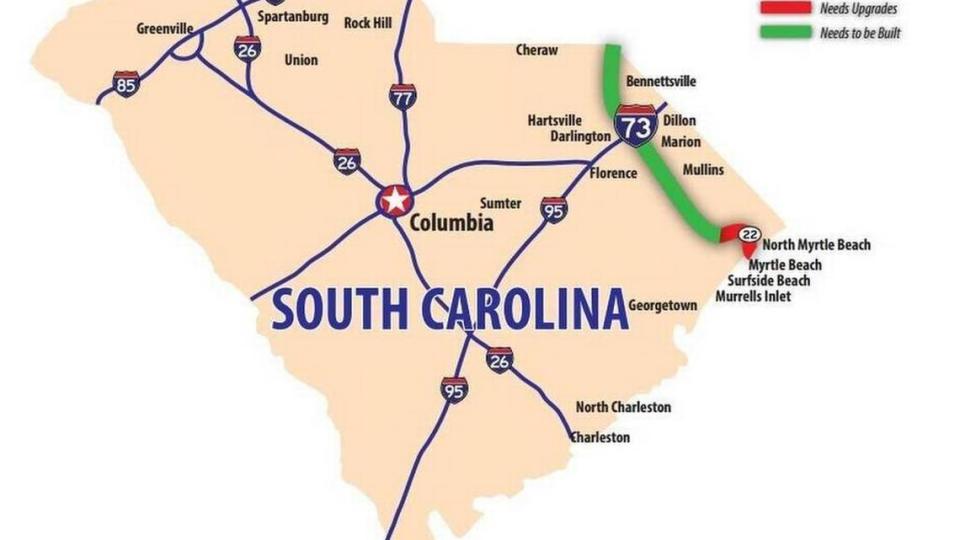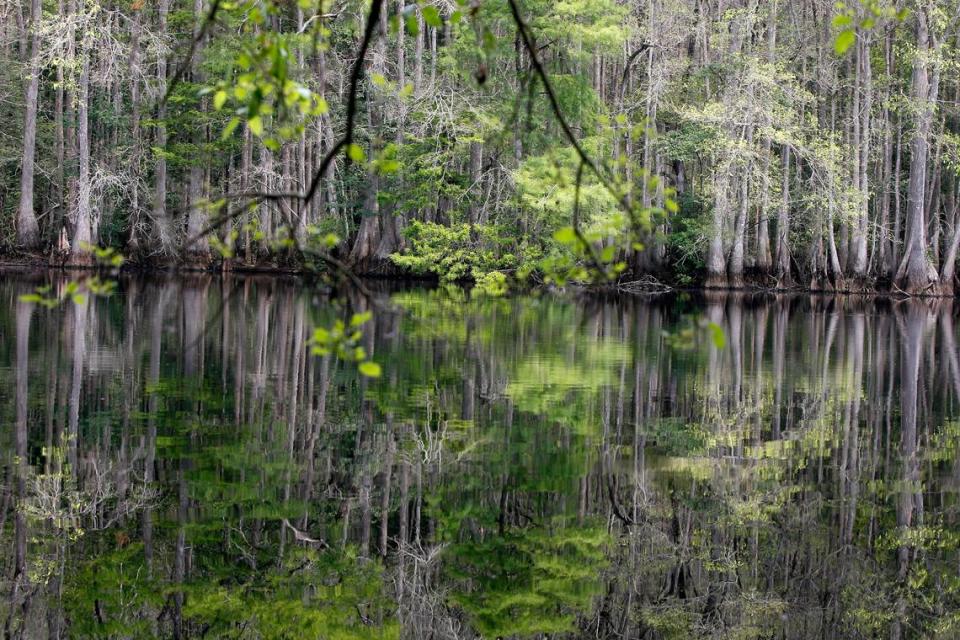Planned SC highway imperils scenic, black water river, national report says
The Little Pee Dee River’s winding path carries it through peaceful, wildlife-filled swamps as it flows between busy Interstate 95 and bustling Myrtle Beach on South Carolina’s northern coast.
It’s in an area that for years has stayed relatively free of heavy development like that found along the Grand Strand. But a proposed freeway that would link I-95 to Myrtle Beach threatens to disrupt the Little Pee Dee River and pollute the dark, tea-colored water that makes it special, environmentalists say.
American Rivers, a national environmental organization, has named the Little Pee Dee one of the nation’s 10 most endangered rivers because of plans for Interstate 73, a new highway supported by an array of business and political leaders.
A coalition of environmental groups and Native American leaders say the report points out the threat that they have worried about for years.
““The Little Pee Dee River is not just a body of water; it’s a vital lifeline to our ecosystem, our heritage, and our future,” according to a statement from Debra Buffkin, executive director of Winyah Rivers Alliance. “As stewards of this precious resource, we must take a stand to ensure its preservation. Development, particularly the proposed construction of I-73, threatens the integrity of this river and the delicate balance of its ecosystem.’’
Her alliance, as well as the Coastal Conservation League and the Waccamaw Indian people, joined American Rivers in criticizing the road and its threat to the Little Pee Dee.
Interstate 73 has been championed by Myrtle Beach leaders as a way to more easily bring tourists to the Grand Strand, and a key way to evacuate them in the case of a hurricane. Leaders have been pushing for a spur from I-95 since the 1980s.
Through years of efforts by highway boosters, the interstate has obtained most of the permits needed to begin work, including one of the biggest, a wetlands permit in 2017. But the road has not been built because money for the $2 billion project is lacking. At this point, state highway officials are working to obtain rights of way from landowners.
Environmentalists hope that by highlighting what they say is a threat to the Little Pee Dee, state leaders will look for other ways to bring tourists to Myrtle Beach, instead of funding I-73. The freeway would cross the Little Pee Dee and extensive wetlands areas.
One plan, pushed for more than a decade by environmental groups, is to upgrade an existing road system through Marion and Horry counties, rather than build a new freeway through virgin areas. Upgrading and widening the S.C. 38-U.S. 501 corridor near Marion could be done for about $150 million.
““There is no need for a new interstate,” said Becky Ryon, the north coast office director for the Coastal Conservation League. “Improving existing roads would deliver similar economic and transportation benefits at a fraction of the cost of building I-73, without devastating our environment and communities.’’
State leaders, including U.S. Sen. Lindsey Graham, a Seneca Republican, and Gov. Henry McMaster, have championed the need for Interstate 73. Graham has called construction of the interstate “one of the most game-changing infrastructure projects in our state.’’

McMaster had supported $300 million for the freeway, calling it a “critical project.’’ But his office said he did not propose funding in this year’s governor’s budget because backing had cooled in the Myrtle Beach area.
“Governor McMaster continues to support the expansion of I-73, but support among county and local leaders has dissipated,’’ spokesman Brandon Charochak said in a statement provided to The State. “Until there is stronger support from local officials, he will not recommend funding.”
Leaders in Horry County are now looking at a local transportation sales tax plan that would generate $450 million toward the project. The plan could be put to voters in November.
At one point, I-73 was targeted to run from Michigan to the South Carolina coast. It was to include two phases in South Carolina: one above I-95 and one below it. The focus in recent years has been on the section below I-95. That segment would connect with S.C. 22 just west of Myrtle Beach.

“We must remain vocal in opposition to funding this interstate and urge Horry County voters to oppose the sales tax,’’ the American Rivers report said., calling the interstate unnecessary.
The Little Pee Dee River begins in eastern North Carolina before crossing into South Carolina’s Pee Dee region. The river travels about 118 miles to its confluence with the Great Pee Dee River, which flows to Georgetown south of Myrtle Beach. Parts of the Little Pee Dee have been designated a state scenic river by the S.C. Department of Natural Resources.
Research has shown that as many as 400 different types of land and aquatic animals live in the area of the Little Pee Dee. Black Bears, bobcats, white-tailed deer, bald eagles, barred owls and red-shouldered hawks are among the species found along the Little Pee Dee, The State has previously reported.
Even though it has been named an endangered river, the Little Pee Dee still enjoys relatively clean water quality.
All told, about 300 acres of wetlands would be degraded or destroyed by the road project, as well as 13 streams, according to the American Rivers report. The report also said flood water generated by a project such as I-73 could soak communities with sewage-tinged runoff and toxic chemicals. Some small communities in the area have been prone to severe flooding in recent years as the earth’s climate changes.
American Rivers is a national environmental organization that advocates for river protection. The group, which has staff members in the Carolinas, puts out a list of endangered rivers every year to highlight threats to sensitive waterways.
This year’s report lists the Little Pee Dee as the fifth most endangered in the country. The top four most threatened rivers are in New Mexico, Mississippi, Tennessee and Arizona, according to the report.
Past American Rivers reports have highlighted other South Carolina waterways considered endangered, including the Edisto River, which is threatened by megafarms that take billions of gallons of water, and the Catawba-Wateree river system, which was deemed to have been under siege by growth and drought.


